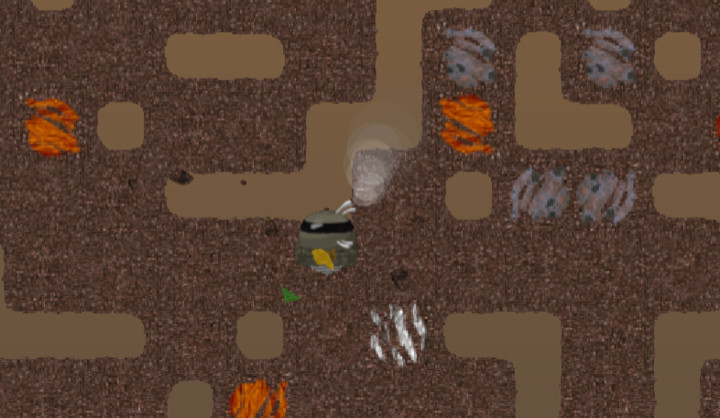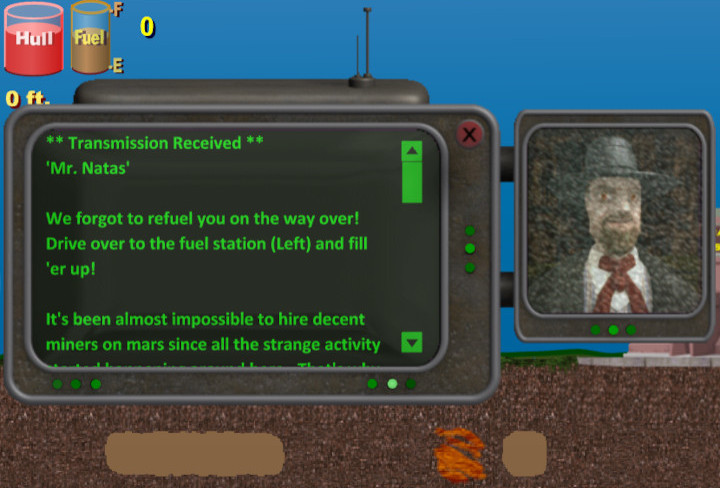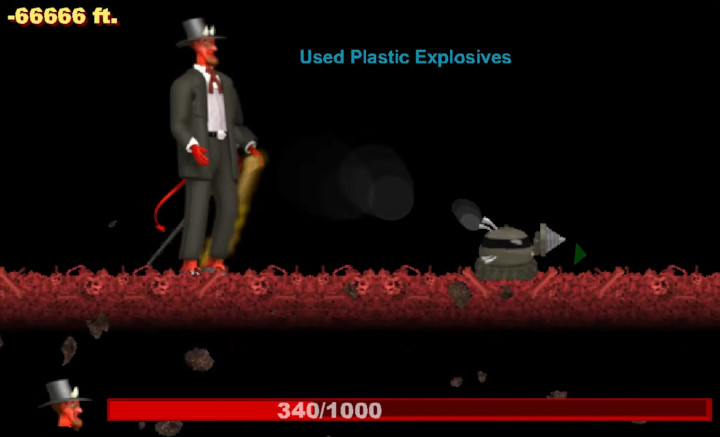
On September 29, in the glorious year of our Borg 2004, a little Flash game known as Motherload was released to the world on XGenstudios.com. It promptly fell into the lap of a fledgling internet user, ten-year old me.
In case you’ve never heard of them, XGen Studios is a Canadian indie game development company that dates back to 2001, and they’ve hosted dozens upon dozens of games, including other games the childhood version of me spent many hours playing. These include Fishy (a game where you play a small fish eating smaller fish to get bigger), Pillage the Village (a game where you use your almighty god mouse pointer to click and fling villagers into the sky, terrorizing them for their money), and, of course, the classic Stick RPG (a stick-figure daily life sim rpg).
But Motherload might have been the most mind-bending game they introduced me to. From the moment I dug out my first innocuous block of dirt, I was hooked. As I mined deeper into the earth, I received messages from a bug-eyed ‘Mr. Natas’ (the single quotes are part of the name, apparently?), encouraging me to gather more materials for him.

The floating drill-mobile drifts from place to place, digging out more dirt, finding more expensive minerals (which I spent on better and better upgrades). The further you go, the more dangerous it becomes, as pockets of gas and lava start appearing.
Just as you’re settling into a comfortable gameplay loop, ‘Mr. Natas’ suddenly doesn’t want you to continue any deeper. It seems like this bug-eyed weirdo is hiding something…
This is where the game really grabbed my attention. I had to know what was up with this ‘Mr. Natas’ guy, so down I went until I reached the bottom of the game world. When I finally got there, I saw his true form; standing before me (and five times taller than me) was Satan, in all his evil, red glory. He was wearing a fancy suit, ready to throw down.

Yes, Satan is the final boss of Motherload (did you catch the ‘Natas’-spelled-backward clue?) After defeating both of his forms, he sinks into the ground, you get his money, and the game just sort of ends.
I was ten years old, and I loved it.
Not long after the initial release, the community feedback was positive enough to justify a second version of the game, titled Motherload Goldium Edition. This was essentially just a patched version of the game with a small amount of additional content, such as more upgrades and online/offline save files.
Then there was nearly a decade of Motherload silence. That silence was broken by Sony in 2013, when they announced Super Motherload as a day-one release for the PS4. Super Motherload is exactly what the name implies, a “super” version of the original game, with better graphics and improved controls. This version includes a ton of new things, such as puzzles that can be solved only with specific bomb placements, a smelter that allows creation of higher-quality materials if you pick up things in a certain order, and bases you can save at as you get deeper.

Reception for Super Motherload was mixed, as some found the game to be too repetitive, while others said it was relaxing. Some reviewers even compared it to games like Minecraft.
My own experience with Super Motherload was nothing short of a pure nostalgia rush. I had a blast, and it’s something I genuinely look forward to playing again (this time actually finishing it to completion). I do recommend it if you dig these low-stress digging-type games. It’s currently available for PS3, PS4, and PC for around 15 bucks.
And if you buy Super Motherload on Steam, it comes with Motherload Goldium Edition as a bonus.